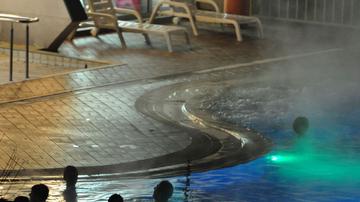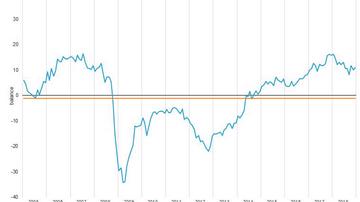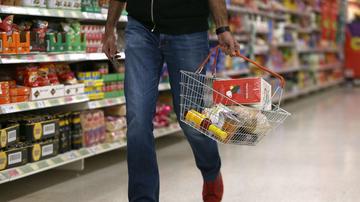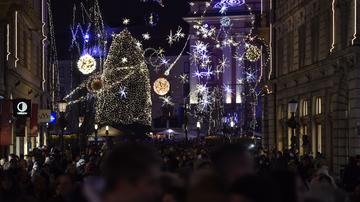
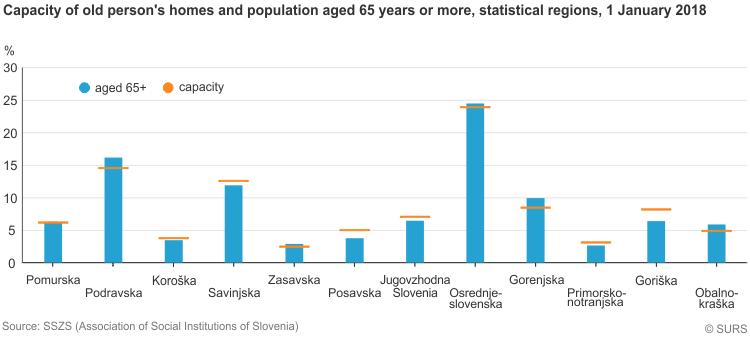
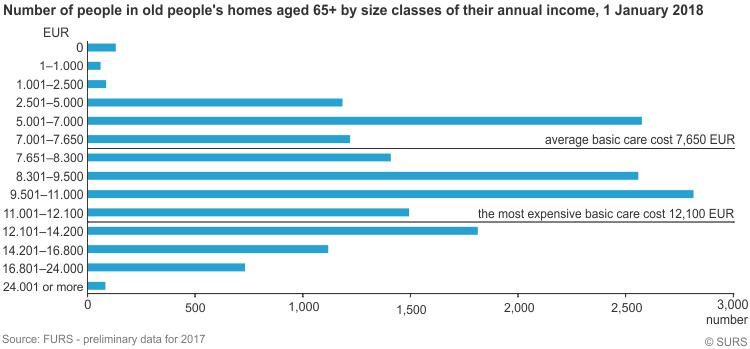
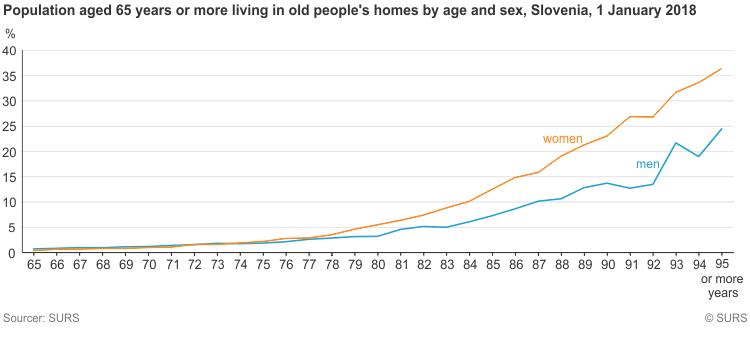
As of 1 January 2018, 4.3% of older persons (population aged 65 years or more) resided in old people's homes. The distribution of capacities and older persons by statistical regions is equalized. Pensions represent 80% of total income of older persons living in old people’s homes.
One of the basic human rights is also decent living in old ages with other family members at home or to be settled in an adequate institution. Old people’s homes substitute or supplement the functions of home and family supplying the residence, organized nutrition and social and health security. According to the Association of Social Institutions of Slovenia data, as of 1 January 2018 there were 123 old people’s homes or special social welfare institutions in the public network with the capacity of almost 19,000 places. At least one unit was located in 91 municipalities (out of 212). The distribution of capacities and the population aged 65 years or more by statistical regions is equalized.
There were 401,262 older persons in Slovenia at the beginning of 2018 (58% of them women), which is 11,000 more than a year before. For many consecutive years the number of centenarians has been decreasing. The main reasons are less people born during World War I and the Spanish flu epidemic right after WWI. The trend of decreasing of the number of centenarians is going to slow down and after 2020 the number will increase by leaps.
Further analyses include 17,321 persons (aged 65+) having their usual residence as of 1 January 2018 in ''classical'' old people’s homes (including those not being part of the public network). There were 132 units located in 93 municipalities.
By age 70 less than 1% of the generation is settled in the institutional care (men enter a little bit earlier than women), while at the age of 85 one in ten residents is living in old people's home and at age of 95 one in three.
Due to adequate spatial distribution of capacities, 87% of people in care are residing in institutions located in the same statistical regions as their permanent residences. The most in the Pomurska region (97%), the lowest share is in the Zasavska region (70%). Out of 2,210 people living in old people's homes outside the regions of permanent residence, 40% of them originated from the Osrednjeslovenska region.
Persons in care originated from all municipalities. From 10 of them not more than 5 older persons are residing in old people’s homes. From most municipalities (177) less than 1% of the total population is living in institutions. The highest share (2.4%) belongs to municipality Štore, and three quarters of them reside in the institution in the same municipality. More than half (53%) of all residents are located in the same municipality. So they can easier stay in touch with relatives, which could be considered as a basic human right.
70% of persons in care could cover basic costs
Average daily cost of basic care in public network in 2018 was EUR 20.95, but the most demanding care for persons with serious health problems costs EUR 34.72 per day. There are significant differences among individual old people’s homes as the costs range from EUR 17.13 to EUR 33.12 per day. 70% of people in care had in 2017 income that was sufficient to cover annual cost of basic care (more than EUR 7,647); 22% of them could cover the most expensive care (EUR 12,088 per year). On the other hand, 132 persons were living in old people’s homes without any income, and 13% could cover the annual cost of basic care in the cheapest one. Pensions represent 80% of total income of older persons living in old people’s homes and for one quarter of them the pension is the only source of income.





















































